Best board games 2024: Must-haves to play with friends and family
Time to roll some dice
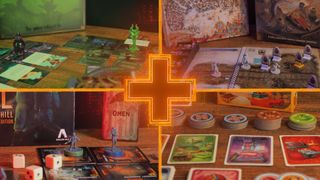
1. Quick list
2. Best for adults
3. Best role playing
4. Best strategy
5. Best co-op
6. Best 2-player
7. Best card game
8. Best classic
9. Best for families
10. Best for kids
11. How we test
12. How to choose
13. FAQ
The best board games aren't just good for Thanksgiving or Christmas when you've got nothing else to do; this is a vibrant and colorful industry that's overflowing with new ideas to suit any mood. Want something for a party, or a team game you can play with your (very) competitive family? It isn't an exaggeration to say that there's something for everyone. Long gone are the days when Monopoly was the most interesting thing on the menu.
To help you get started, our experts and I have put our heads together to build this list of suggestions that should be in every collection. (If you ask us, they're the best board games on shelves right now.) These run the gamut of old favorites to fresh-off-the-press trendsetters, and I'll update this page each month with any new additions that our team's fallen in love with. Oh, and if you're not sure what you're in the mood for, don't worry – GamesRadar+ still has you covered. Just check in with our advice on how to choose board games further down the page.
Wondering how we settled on which products to feature, on the other hand? Our team reviews the best board games all year 'round, and we've been rolling dice for decades before that. Basically, we won't ever recommend a product we don't truly believe in. As mentioned throughout this page's how we test section, we've had extensive hands-on time with all of the entries listed here too. If we don't think it deserves a place amongst the best of the best, it's not getting into the guide.

Benjamin's been writing about the best board games for more than five years, but has been playing them ever since he was old enough to roll dice. He's currently taking a look at Life in Reterra, a post-apocalyptic (re)building game.
Quick list
Recent updates
May 20, 2024: This guide has been updated with a new strategy board game (Dune: Imperium - Uprising) that scored incredibly well in our recent review. The FAQ section has also been tweaked to make sure it remains up to date.
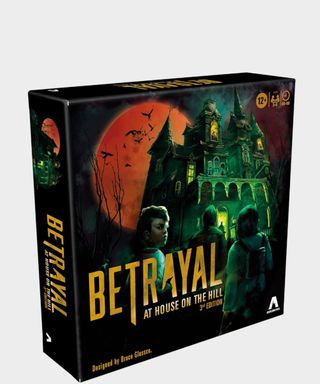
Best board game for adults
Expertly balancing exploration, teamwork, and tension with a frantic dash to the finish, this is one of the best experiences you can have on games night - it's a thrill.
Read more below

Best RPG board game
Thanks to a fully-realized world, a branching storyline, and more depth than the average mine, Jaws of the Lion is a must-have for fantasy-lovers that want a new epic to explore.
Read more below

Best strategy board game
If you loves that give your gray matter a workout, this adaptation of the films should be on your radar. Impressive replayability and the many paths to victory help Uprising make an impression.
Read more below

Best co-op board game
If you'd prefer to work with rather than against each other, this co-op classic comes highly recommended thanks to an emphasis on teamwork and nail-biting gameplay. It's challenging enough that winning is extremely satisfying.
Read more below
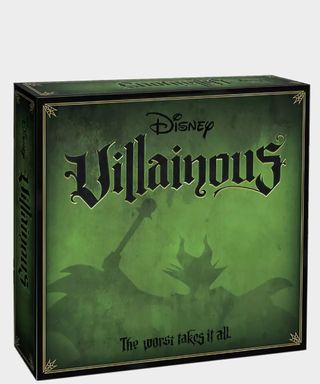
Best 2-player board game
What if the bad guys won for a change? This one's about giving the villains their happy ending, all while screwing over your opponents. It's marvelously wicked.
Read more below

Best card game
Easy to get the hang of and supremely more-ish, this is the ultimate trading game with plenty of room to experiment in terms of strategy. A short play-time will keep you coming back too.
Read more below
Load the next 3 board games ↓

Best classic board game
This retro classic has been around for years, and that's no surprise; its blend of negotiation and rule-breaking is still just as gripping now as it was in the '70s.
Read more below
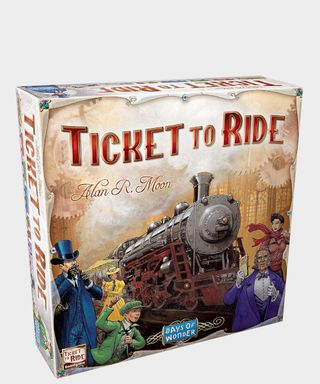
Best family board game
It's rare to find a board game you don't mind losing, but Ticket to Ride manages it. This is a phenomenally chilled-out experience that anyone can get their head around.
Read more below

Best children's board game
If you're shopping for children, board games that are easy to understand but endlessly replayable are king. We've yet to find one that does it better than Sushi Go, and it's always one we recommend when asked.
Read more below
Best board games: For adults
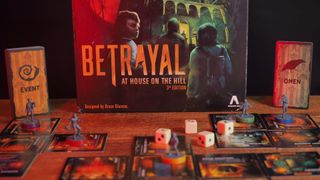
Specifications
Reasons to buy
Reasons to avoid
✅ You want something with a little more depth: Even though it's accessible, Betrayal has more meat on the bone in terms of strategy than rivals. It's a decent step up from classic family games in terms of narrative, too.
✅ You love adventure games: If you're a fan of games that emphasize exploration and storytelling, it doesn't get much better than this. Discovering new rooms is a cornerstone of Betrayal, and the plot is inseparable from its mechanics.
❌ You want something easy and breezy: Looking for a simple party game that'll only last 20 minutes or so? This ain't it, chief. Despite being accessible on the whole, it's still far more complex than classics such as Clue.
❌ You don't like randomness: This game relies on randomly-drawn board tiles and cards that'll dictate what happens next. If this kind of unpredictability doesn't appeal, Betrayal probably isn't for you.
At a glance: Ever wonder how long you'd last in a horror movie? Betrayal at House on the Hill lets you find out. Setting players loose in a haunted mansion that's quite literally out to get them, it's drenched with tension. It's also unpredictable enough that you're never sure what's going to happen next. Sure, not all of the scenarios are created equal. But if you're hunting down something more mature in terms of both narrative and gameplay, this is one of the top board games for adults.
How it works: Your aim here is simple - make it out of the mansion alive after completing one of 50 missions. That isn't to say it's predictable, though. Betrayal isn't set up like traditional board games, and that's part of its appeal. Your character has been drawn to the house for mysterious reasons (they're following a friend who's gone missing or received an invitation from parties unknown, for example), and it's revealed turn by turn as you try to solve that case. However, each room is selected at random when you enter it. The items or events encountered within are randomized as well. In other words? There's no way of telling what lurks behind those doors.
The only thing you do know is that one of the game's scenarios will eventually begin, dictated by the rooms and items you've drawn. This mission turns your allies - or the mansion itself - against you. Seeing as both sides are given secret objectives to follow, the result is an anxious yet exhilarating race against time.
If you're new to the franchise, buckle up; this might become a favorite
Benjamin Abbott, Tabletop & Merch Editor
Gameplay: This game's deadly twist on guess-who keeps you coming back for more. Which player is going to be unmasked as a traitor? And what will their mission be? With several-dozen imaginative scenarios under its belt, the novelty won't wear off anytime soon. Actually, we've still not seen everything these dusty halls have to offer despite having played for years. That puts Betrayal one step ahead of more formulaic (though still excellent) rivals like Mansions of Madness, and it ensures you'll have a blast even if you've played an older version of the game. (To see how previous instalments stack up against the current one, check out our guide to Betrayal at House on the Hill 3rd edition vs 2nd edition.)
Yes, there's a learning curve. Its scenarios aren't always the most well-balanced either, and a few mission rules could be clearer. But on the whole, you'll have enough fun that those niggles won't matter. This is perfect for game night with your grown-up friends (this most definitely isn't for kids).
🏆 GamesRadar+ verdict
Betrayal's blend of storytelling and exploration leave a real impression. It's accessible yet deep, and fast-paced in spite of being strategic. Thanks to a schlocky horror theme, it's a must-have if you're searching for good Halloween board games too. In short, it's more than earned its place on our list of the best board games. A couple of expansions (starring a werewolf or revolving around twisted Christmas tales) should keep that magic alive for even longer, too.
Read more: Betrayal at House on the Hill review
More recommendations for adults
Why you can trust GamesRadar+
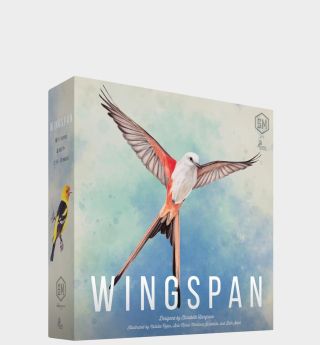
This award-winner is popular for a reason; it's as engrossing as it is chilled-out. Throw in beautiful artwork and gameplay that's competitive without being overbearing and you have one of the best board games out there.

This movie-based battle of wits stands out from the crowd because everyone can get involved no matter how much they know about films – it's incredibly easy to explain and set up. Crucially, it's also a lot of fun.
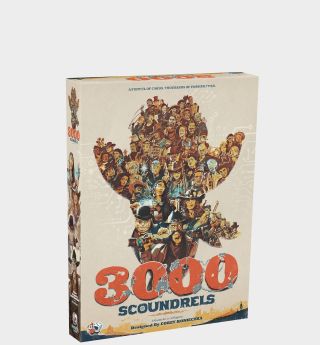
Alongside nailing the essential tropes of a Wild West adventure, this board game throws a curveball via a time-travel twist. When combined with near-limitless card combos and compelling bluffing mechanics, this is far from bad or ugly.
Best board games: Role playing
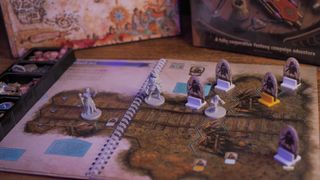
Specifications
Reasons to buy
Reasons to avoid
✅ You want an epic adventure game: Seeing as you'll be embarking on grand adventures and crawling through dungeons each session, Jaws of the Lion will hit the spot if you're in the mood for some swords and sorcery. Plus, the fact that you level up your characters over time should scratch that RPG itch too.
✅ You want your choices to matter: Because your decisions are carried over from session to session, what you do really does matter. The world feels much more alive and infinitely more memorable than most other games on your shelf as a result.
❌ You want something simple: Despite being a lot more accessible than standard Gloomhaven (it was pitched as an easier way into the game), Jaws of the Lion is still a lot denser than a lot of board games. Keep that in mind before hitting the checkout.
❌ You're expecting it to be as deep as standard Gloomhaven: The original Gloomhaven (not to mention its sequel, Frosthaven) defines 'sprawling fantasy epic.' Indeed, it'll take you months to finish. Even though Jaws of the Lion has plenty of depth, it's nowhere near as big. If you're expecting it to be on par with its predecessor, you'll be disappointed.
At a glance: If you have a soft spot for fantasy and love nothing more than poring over ye-olde maps while dreaming of adventure, Gloomhaven: Jaws of the Lion should be on your radar. This dungeon-crawling epic taps into all that with branching storylines more commonly seen in the best tabletop RPGs, and it makes skilful use of 'Legacy' mechanics where the consequences of your actions carry across from one session to the next.
How it works: Jaws of the Lion casts you as a mercenary looking for work in the grungy metropolis of Gloomhaven (imagine the world of The Witcher and you won't be far off). As is only right for fantasy RPGs, said 'work' involves swords and/or sorcery. These jobs lead you through a grand narrative where your choices matter, so tread carefully - decisions can, and will, have consequences.
While all that sounds intense, the game has been designed with accessibility in mind. Unlike the full Gloomhaven or its sequel, Frosthaven, this one is smaller in scale and drip-feeds everything you need to know piece by piece. That includes a novel combat system which gets rid of random dice rolls. Rather than leaving success up to luck, all of your movement or attack actions are divvied up onto cards instead. The challenge lies in deciding which ones to use - and when.
Gameplay: Few board games can match the sense of agency in OG Gloomhaven, and it's no different for Jaws of the Lion. Along with upgrades for your character that'll provide a more personal connection with them, battles being so skill-based makes victory all the sweeter - your clever tactics saw you through, not luck of the dice. And while there is still a steep learning curve, it's far less intimidating than its predecessors.
While the original Gloomhaven feels like a must-have for all those a little too into tabletop gaming, Gloomhaven: Jaws of the Lion is a must-have for everyone else
Abigail Shannon, Tabletop & Merch Writer
It's also worth persevering with. Honestly, there's nothing quite like the combat of this series. Trying to figure out the best combination of actions to use at any one time is a compelling mini-game in itself, and juggling your limited resources (you'll lose cards as you progress) makes for a challenging puzzle. Seeing as you'll have to balance helping your allies with hunting loot that can improve your hero, there's also a sizzling unease to keep you on the edge of your seat. Can your friends be trusted in a pinch, or are they more interested in helping themselves?
🏆 GamesRadar+ verdict
Seeing as it's more accessible than the original Gloomhaven (and much less expensive), this is a great place to start regardless of whether you intend to tackle other entries in the series or just want a taste of adventure. Yes, it's more complex than many other board games. But it's also a whole lot better.
More RPG recommendations

If you tried and loved Jaws of the Lion, it's time to graduate to the original Gloomhaven. This sprawling epic takes those mechanics and builds them out into a grand adventure unlike anything else in board gaming right now.
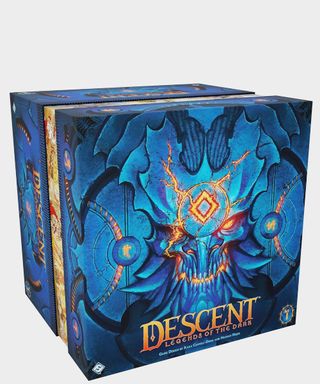
We've always got time for a fantasy adventure, but Descent truly impressed us. A clever blend of tabletop gameplay and app-based enemies bring the experience to life in a way few of its rivals can.

Regardless of whether you grew up with the original version or are new to the best board games, it's worth keeping modern HeroQuest in mind. It wrote the book on tabletop adventuring, and still has a few tricks up its sleeve.
Best board games: Strategy

Specifications
Reasons to buy
Reasons to avoid
✅ You love deep strategy games: With numerous systems to master, different characters to play as, and a huge variety of potential outcomes to wrestle with, the tactics needed to come out on top will give you plenty to chew on.
✅ You want a game you can play many, many times: Because Uprising's core mechanics (be they the extensive deck of cards or the tactics of different leaders) result in different results every time, the game has immense replay value. Want maximum value for money? You'll get it here.
❌ You don’t like direct confrontation: Just like the movies, this is a do-or-die battle to the bitter end. You'll need to fight over resources and bring opponents to battle, so it's a little more intense than some worker-placement games.
❌ You mostly play solo or two-player games: Seeing as Uprising is at its best when played with three or more people, it can miss the mark when run solo or in a pair.
At a glance: He who controls the spice, controls the universe… While that's still true in this well-received Dune adaptation, giant sandworms certainly help. A deeply tactical (and very replayable) rush to conquer Arrakis, Uprising is the sort of game that you can truly lose yourself in. With a variety of characters to master, play-styles to learn, and approaches to take, this deeply thoughtful strategy board game is up there with the greats.
How it works: As you'd expect from a game that's all about conquering the planet, Uprising revolves around worker-placement. It also deploys deck-building mechanics that give you a dizzying array of options based on when you play your cards and what you use them for.
If you played the original Dune: Imperium from 2020, this will all sound familiar (Uprising is a standalone follow-up that uses many of the same systems.) However, the spy, contract, and sandworm mechanics are all new – the latter of which can change the course of a match. That may as well make Uprising a new edition of Imperium, and we'd say it's the superior option if you have to choose between them.
Gameplay: A compelling sense of push and pull gives Uprising its edge. To begin with, there's the usual rush to claim spaces – the definition of good worker-placement games. However, the status quo is upended with spies. These rogue agents allow you to occupy a space even if another player has claimed it, and you'll get a reward once you take that spy token back. Choosing your moment is key as a result; you've got to weigh up gaining a benefit in the here and now or making sure you have access to that space in future rounds.
Sandworms are an equally seismic change. As it was on-screen, these beasts can totally change your prospects. Although they're hard to get (you must convince the Fremen to aid your faction), they're stronger than standard troops and double the rewards of a battle. This provides yet another strategic option to wrestle with.
Uprising has immense replay value, encouraging you to test new strategies each session based on the cards available
Samantha Nelson, contributor
Still, we wouldn't recommend playing Uprising as a solo or two-player game no matter its bells and whistles. Tackling it on your own pits you against randomly-drawn cards that mean your opponents either do nothing or run away with the match due to sheer dumb luck. Meanwhile, trying it with two players removes a lot of nuance from the experience. In our experience, it's better with three or more people around the table.
If you can gather six friends, you'll experience the game at its best. This narrative mode casts one of you as Paul Muad’Dib, while another fills the shoes of Emperor Shaddam Corrino IV. Both must lead their allies to victory in a large-scale confrontation that will provide an engrossing challenge for veterans.
🏆 GamesRadar+ verdict
This follow-up to Dune: Imperium rises above its predecessor (along with some niggles) to become a must-have if you enjoy medium-weight strategy games. An expansive deck and the unique strategies favored by each character provide replayability to spare, and matches are normally close enough to keep you on the edge of your seat. Even if you lose, though, you'll still have enjoyed yourself enough not to mind.
Read more: Dune: Imperium - Uprising review
More strategy recommendations
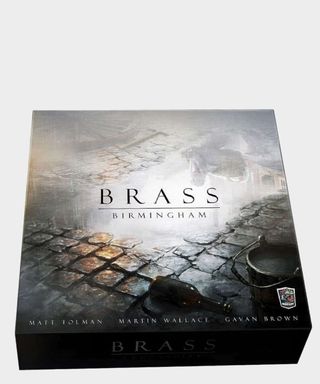
In an unexpected twist, this board game is one of the best-rated titles out there. Equal parts trading game and simulation, you play a businessperson during the industrial revolution who must take advantage of an ever-changing market.
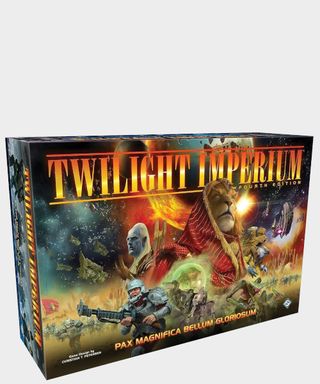
Besides being famously sprawling in scope, Twilight Imperium is often seen as one of the best board games for strategy fans. The relationships between players' factions – and their secret objectives – can make matches last hours.
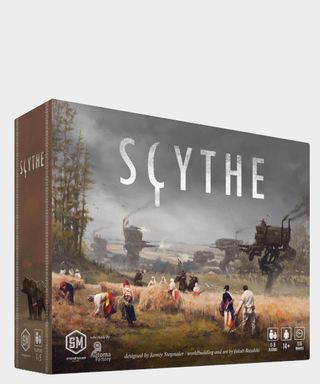
Born out of gorgeous artwork depicting an alternate history with added mechs, Scythe is an 'engine-building' game where you have to lead your nation to power in the 1920s. It doesn't rely on luck, though; gameplay revolves around skill.
Best board games: Co-op
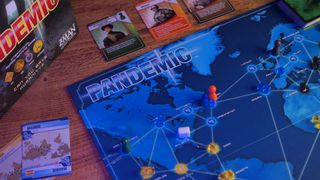
Specifications
Reasons to buy
Reasons to avoid
✅ You want a gripping team game: Battling each other for supremacy can be exhausting, especially if the people you're playing with are competitive. That makes this co-op challenge a breath of fresh air. You win or lose together, and good communication is essential.
✅ You're looking for a challenge: This game doesn't take any prisoners, and that makes it all the more enthralling. You'll find yourself pushed to the brink as you wrestle with its clever mechanics.
❌ You don't like pressure: Tensions run high in Pandemic (you are saving the world, after all), so anyone that doesn't like pressure in games won't enjoy it.
❌ You want something easy: Want to avoid raising your blood pressure? It's probably better to stay away from this one - part of the fun in Pandemic is that it forces you to strategize on the fly.
At a glance: The odds are against you from the start in Pandemic, but that's the beauty of it. This team-based epic is never less than thrilling, and it doesn't feel hopeless either. Despite being tasked with curing a clutch of super-diseases, good communication (not to mention the ability to think on your feet) will see you through. Want satisfying cooperative board games for your collection? This should be at the top of the pile.
How it works: You're racing against the clock in Pandemic - you've got to contain and cure four deadly diseases that are sweeping across the globe. Naturally, this is far from a walk in the park. For starters, new infections (represented by dinky, colored cubes) are placed on random cities each turn. If enough cases gather in one place, they'll spill into neighboring areas in a devastating domino effect. To make matters worse, the number of infections deployed each turn increases over the course of the game. Spin your wheels and you'll get overwhelmed.
This leaves you with a difficult choice: research a cure by collecting cards (at which point the game stops placing infections for that particular disease), or remove infections at a local level so you can keep things under control.
A psychological shot of espresso
Benjamin Abbott, Tabletop & Merch Editor
Gameplay: Pandemic's balance of risk and reward keeps it at the top spot as one of the best board games overall. Is it better to keep disease levels down so that they don't spread from city to city in the short term, or should you play the long game and go all-in on developing cures? There's no right answer.
More importantly, that question will keep you on the edge of your seat. We've rarely seen our group more invested than here, and the need to constantly change your battleplan on the fly means that communication is vital - a must-have for co-op games. And it's true that all this is a bit stressful. But it's also gripping. As we mentioned in our review, such white-knuckle decision-making "shows off everything tabletop gaming is capable of."
🏆 GamesRadar+ verdict
There's a good reason why Pandemic has been on shelves for a couple of decades now - its blend of challenge and elation when you win makes it a classic. While there are countless versions to choose from now, we're still partial to this original game due to how elegant it is. Absolutely nothing is wasted in terms of mechanics and design.
Sure, its theme hits closer to home nowadays. But there's something cathartic about giving a pandemic the boot… even if it's only in this tabletop world of tokens and cards.
Read more: Pandemic board game review
More co-op recommendations
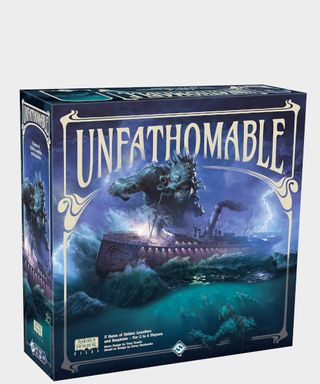
If you're a fan of deception games and horror, this will be one of the best board games for you. Despite being quite long, the struggle between traitors, other players, and giant monsters will have you on the edge of your seat.
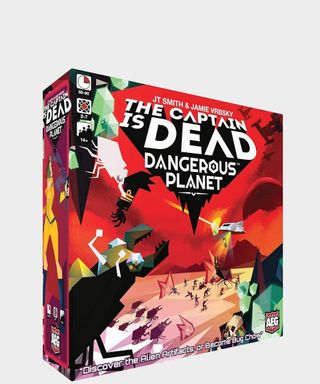
Consider yourself a board game aficionado? You'll get on well with this Star Trek spoof. It's a twist on tower defense at its core with depth to spare and fiendish difficulty holding it all together.
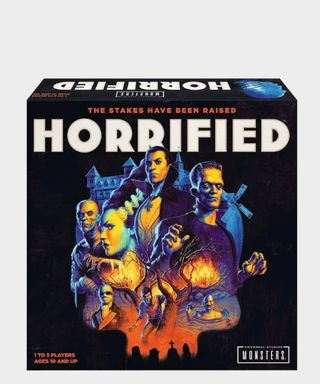
This co-op game has mastered the trolley problem. It's surprisingly hard to save everyone and complete your objectives, so having to make tough decisions on what to do next elevates Horrified above its peers.
Best board games: 2-player
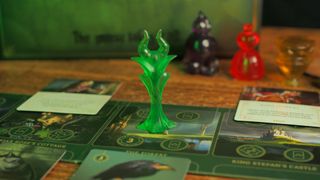
Specifications
Reasons to buy
Reasons to avoid
✅ You're looking for a game you can play together long-term: Because each character comes with their own unique strategy, strengths, and weaknesses, this is the sort of game that benefits from repeat play over a long period of time.
✅ You're a big Disney fan: Villainous is a love-letter to Disney films both new and old, so anyone that adores the House of Mouse will find plenty to appreciate here.
❌ You're expecting something for kids: Despite being based on family-friendly movies of our childhood, Villainous is a competitive strategy game with oodles of depth. It's not a good fit for young children as a result due to the patience it requires.
❌ You don't have patience for complex rules: Villainous takes a hot minute to get your head around, and if you aren't willing to invest time in learning how it works, you won't enjoy the experience.
At a glance: Never has a game been more on-brand than Villainous. It delights in letting you be as mean as possible, and you're encouraged to scupper a foe's plans in search of your character's happy ending. You see, this isn't a cash-in for kids; it's ruthless, surprisingly tactical, and deliciously wicked.
If you ask us, that intricacy makes Villainous better when played head-to-head. While duking it out with lots of other people is fun, reducing the head-count makes things less chaotic and gives you more time to strategize. It's a great choice in terms of must-have board games for 2 players.
How it works: As the name would suggest, Villainous revolves around classic baddies getting their way - Jafar wants to control Genie, Prince John is trying to amass a fortune, and so on. Think of it like a 'what if' scenario, where the antagonists finally get their way.
What follows is a nostalgic romp through classic Disney films, reimagined here with original artwork. There's complexity hidden beneath all those gorgeous paintings, though. You'll navigate a personal board in search of allies, effects, or items that can help you complete your unique objective, and because each character has their own play-style, the experience is surprisingly deep. (As our review points out, "there's so much to get your teeth into.") What's more, you can delay your rivals by sending heroes to harass them. Seeing as these do-gooders block certain actions or introduce obstacles until they're removed, it adds a whole new dimension to proceedings.
What if the bad guys triumphed for once? And wouldn't that be more fun? As it turns out, yes. Yes it would
Benjamin Abbott, Tabletop & Merch Editor
Gameplay: Once you've gotten your head around your villain's special rules, you'll be cooking with gas. Despite being complex, Villainous is a masterclass in how to make a compelling, endlessly replayable strategy game. Genuine skill is rewarded here; coming out on top isn't due to luck, and knowing when to use certain abilities (or saddle your opponent with a well-timed hero) is essential.
It's a similar story when you're taking on different villains as well… particularly if you throw Disney Villainous expansions into the mix. These add-ons encourage you to adopt all-new strategies, and they're a good way of injecting life back into the game if you think you've mastered it.
Speaking of alternate characters, it's always a treat to dig through their decks. Villainous is downright beautiful; every illustration has been made with the utmost care stunning, and each mover is a work of art in its own right. Seriously, this is one of the best-looking board games out there.
🏆 GamesRadar+ verdict
If you can get to grips with the game's rules, you'll discover one of the most rewarding picks on this list. Disney Villainous sings in every respect that counts; it feels fresh each time you play, and different match-ups encourage all-new strategies to keep you on your toes.
It's also the quintessential example of 'the more you put in, the more you get out.' Dedicate some time to learning how Villainous ticks and you'll end up with a much richer experience - this is definitely a game that improves with repeat sessions, largely because that's the best way to uncover each characters' nuances.
Read more: Disney Villainous review
More 2-player recommendations

This puzzle board game is mesmerizing both in terms of its gameplay and looks. Besides being different every time you play, each match is a satisfying conundrum to solve. You'll want to keep coming back for more.
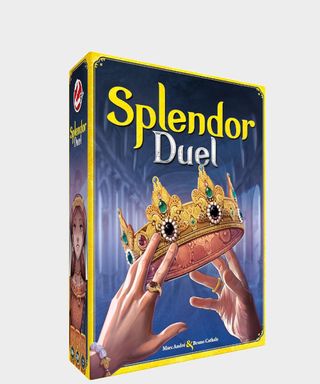
Are you a competitive person? You'll appreciate this two-player variant of the original Splendor. Much like 7 Wonders Duel, it reduces its predecessor in size and scope without sacrificing quality. In fact, it's potentially better…
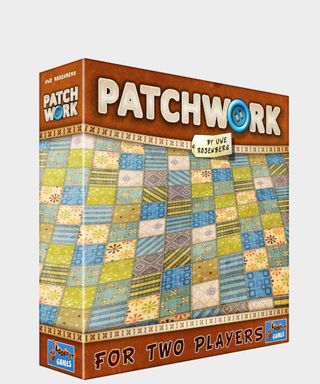
This puzzle game is simple but oh-so satisfying. It's essentially tabletop Tetris, except you're trying to fill your board with quilt patches. You lose points for blank spaces at the end, so you'd better get your thinking cap on.
Best card game
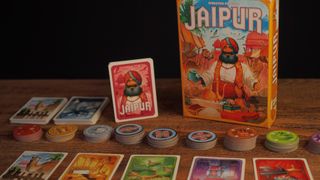
6. Jaipur
Our expert review:
Specifications
Reasons to buy
Reasons to avoid
✅ You want something very replayable: Because there are so many different strategies you can make use of (and each session offers unique opportunities), you can play Jaipur multiple times and have a different experience each round.
✅ You want a good travel game: Seeing as it doesn't take up much room in use or when packed away, Jaipur is the ideal game to take with you on the go.
❌ You want a multiplayer game: Unfortunately, Jaipur is limited to two players only. That means you're out of luck if you want to play as a group, or with multiple people.
❌ You want a complex strategy game: Although this game has more than enough strategic back and forth, it's not the most tactical option.
At a glance: Unusual, accessible, and delightfully compelling, Jaipur deserves to be in everyone's collection. Actually, we'd argue that it's one of the best card games ever made. After encountering it years ago at the suggestion of a board game cafe barista, we've been recommending it to anyone who'll listen ever since - it's got enough strategy to keep you invested after repeat matches, but isn't going to bog you down. It's also a fantastic travel companion because it doesn't take up much room in use or packed away.
How it works: Casting you as one of two traders in the eponymous city of Jaipur, your challenge is to earn an invite to the maharaja's court by being the best businessperson in all the land. How you do that is up to you though, and there's plenty of room to experiment.
You'll spend your turn either 'buying' (e.g. taking) a goods card from the table or selling sets of cards you've collected. The more you sell, the more points you get, and some wares - like silver or gold items - are worth more than others. But be warned: goods decrease in value as more are sold, so you can't wait too long to shift your stock.
A rare two-player card game that manages to keep its best strategies hidden until its main mechanics are mastered, Jaipur is my favorite way to fill 15 minutes with a set of cards
Tabitha Baker, Hardware Managing Editor
Gameplay: Is it better to buy and trade cheap items as fast as possible? Or should you collect expensive goods for a bigger payday? There isn't a 'correct' way to go about things in Jaipur, and that flexibility helps the game stand out.
It also provides an engaging tug of war between both players. Seeing as wares decrease in value as more are sold, your opponent could beat you to the punch if you don't cash your cards in quickly enough. This delicate balancing act will keep you coming back over and over, eager to play 'just one more time.'
🏆 GamesRadar+ verdict
There are few games in our collection that we come back to over and over again, but Jaipur is one of them. Its mechanics are elegant yet engrossing, and even though fans of strategy may find it a little light, that makes it easy to pick up.
More card game recommendations

MTG has been going strong for more than 30 years now thanks to smart gameplay that's as compelling as it is competitive. While normal starter sets are ok, this Lord of the Rings alternative feels more accessible - and better themed.

Even though it still has a sharp, tactical edge, Star Wars Unlimited (a brand-new contender for the TCG crown) is much more accessible than the likes of Magic or Pokemon. It's a lot snappier as well, so matches don't drag as much.

The trading card game market is a tough nut to crack, but this Disney offering has beaten the odds. It's been exceedingly popular so far, and accessible mechanics along with gorgeous artwork demonstrate why.
Best board games: Classic
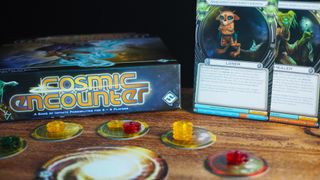
7. Cosmic Encounter
Our expert review:
Specifications
Reasons to buy
Reasons to avoid
✅ You want something a little different: Cosmic Encounter takes one look at 'normal' rules, shrugs, and decides to go in the opposite direction. Part of the fun is that its playable species break the game's own mechanics.
✅ You love games with talking and bluffing: Diplomacy is a crucial pillar of Cosmic Encounter, so it's a great fit for anyone that likes negotiation, deception, or bluffing games. Trying to convince other players to join your cause can mean the difference between winning an encounter and losing. It's also a good way of deceiving rivals by turning 'alliances' into an ambush…
❌ You want something simple: Because it rips up the rules (in a manner of speaking, anyway) and offers lots of unique options, Cosmic Encounter may not be your speed if you want something really straightforward.
❌ You don't like lots of talking: There are no two ways about it - Cosmic Encounter is a 'talky' game. If the idea of having to negotiate each round is a turn-off for you, best steer clear.
At a glance: This sci-fi favorite was first published in 1977 and has been through numerous editions since then, but all of them have something in common - they're brilliant. Few classic board games have aged as well as this; its blend of strategy and quick-talking was peerless at the time, not to mention now. In truth, we bet it'll still be going strong in another 40 years.
How it works: Cosmic Encounter likes to break its own rules. It's like a pedantic teenager that does the opposite of what you ask; this is a fiercely creative game.
Each player takes the reins of an alien race, and their aim is to establish colonies on planets owned by rivals. They can do so through force (by playing a larger number from the cards in their hand) or negotiation. But the process isn't as simple as it sounds. To begin with, every 'encounter' allows players to make alliances that can tip the balance in their favor. What's more, all species have a special power that breaks the game's own rules in some novel way. Examples include winning by losing or reversing attack card numbers so 17 becomes 71.
Cosmic Encounter is clever enough to run rings around its peers
Gameplay: All those special powers make the game delightfully unpredictable. Seeing as 51 alien species are included in the base set, there's almost always something new to see, learn, or overcome. You never get a chance to rest on your laurels as a result, and different matchups require different strategies. Simply put, it's energizing.
Like many of the best board games, Cosmic Encounter creaks beneath the weight of expansion packs as well. More than half a dozen add-ons are available if you want to shake things up, so there's plenty to keep you busy here should you grow tired of the base game.
🏆 GamesRadar+ verdict
Monopoly and Risk may be better known, but this classic board game is arguably more praiseworthy. It's just as absorbing now as it was in the '70s, and few can match its slightly depraved creativity. Cosmic Encounter is clever enough to run rings around its peers, so it comes highly recommended a full 46-ish years after it hit shelves.
More classic recommendations

This modern classic is what you'd call a gateway to the best board games; despite being accessible, it introduces more nuanced gameplay that'll keep you coming back for more. It's likely to still be here in another 30 years.

While you can play Carcassonne with more people, we'd argue that two is the perfect number. You get more turns with this chilled-out modern classic from 2000, and there's added flexibility for each match as a result.

If friends and family are descending upon you en-masse, Articulate is one of the best board games to break out. Having appeared on shelves since 1992, this is a trivia triumph that everyone can get involved with.
Best board games: For families

Specifications
Reasons to buy
Reasons to avoid
✅ You want something easy but fun: Looking for a game that's accessible and light-hearted, but not boring? Ticket to Ride will fit the bill nicely. Despite being easy to understand, there's still enough strategy here to keep you interested.
✅ The people you're playing with aren't board gamers: The wonderful thing about Ticket to Ride is the fact that it's so accessible. Even if your opponents have never played anything more exotic than Monopoly, they'll still be able to get involved easily enough.
❌ You want something that'll challenge you: Even though there are tactics on display in Ticket to Ride, it's not going to stretch you. This is a fairly laid-back experience overall.
❌ You'll be playing it a lot: Ticket to Ride can get a little tired if you overdo it. It got us through lockdown during the pandemic via virtual matches with family, but eventually we learned all the routes and the game lost its shine. This one's best played every now and then instead so the novelty doesn't wear off.
At a glance: Ticket to Ride is one of the most laid-back entries on this list, and that makes it the perfect choice if you want board games for families that aren't going to start a civil war around the table. Thoughtful and relaxing, it's a delight for all ages.
How it works: Picture the scene - it's the early 1900s, top hats are in, and trains are still of the steam variety. In this quaint landscape of frilly frocks and tail-coats, you've got to plot railway routes from one city to another. Whoever builds the longest line (and connects the most cities) wins.
Sounds easy so far, right? And it is; you couldn't call Ticket to Ride an overly competitive game. Nonetheless, it is possible to ruin each others' day along the way. If you can guess where someone's trying to go, you can cut off their route by building there instead, thus denying them those valuable points.
Gameplay: OK, so the railway theme may not light your world on fire. But there's an undercurrent of strategy holding everything together here, allowing it to hit the perfect balance of being family-friendly without losing any tactical complexity. That makes Ticket to Ride one of the best board games even if its players haven't ventured beyond Scrabble.
A tense but incredibly rewarding experience that opens itself up to strategy and logic just as easily as it does creative thinking and social play
Tabitha Baker, Hardware Managing Editor
It's not overly aggressive, either. Unlike so many entries on this list, there's less emphasis on screwing each other over. Although it's frustrating when a rival claims a route you were going for, there's usually an alternative with which you can salvage all that time and effort. As such, this is an option we're more than happy to break out if things can get heated on game night. Like our review mentions, it's "the perfect option for newcomers and tabletop veterans alike."
🏆 GamesRadar+ verdict
Looking for an easy-going game for post-Thanksgiving or Christmas dinner lulls? This is a great choice. It's both accessible and pleasantly low-key, letting players of all skill-levels tackle the challenge at their own pace.
Read more: Ticket to Ride review
More recommendations for families

Trying to find board games without confusing rules? Herd Mentality says hello. It's easy to get the hang of and won't ever go out of date, because it hinges on what everyone else thinks. There's no 'right' answer – your aim is to be in the majority.
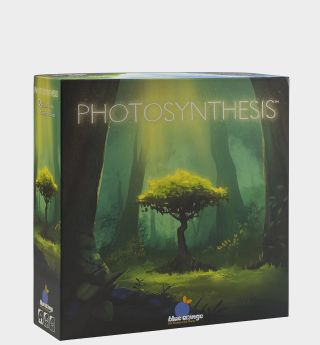
If you're looking for something more in-depth, Photosynthesis will do the trick. Its laid-back challenge to grow your own forest and earn points is challenging, but in a satisfying way – it's not confusing or overly competitive.
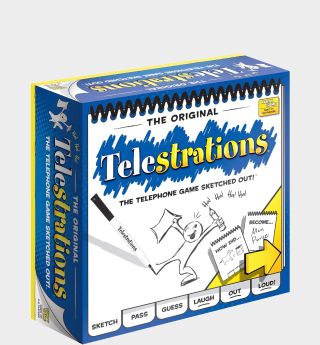
It may be simple, but Telestrations still stands out as one of the best board games for families. Each round starts with you getting a prompt you have to draw, and the next person guesses what it is – and so on. The result is wonderful chaos.
Best board games: For kids
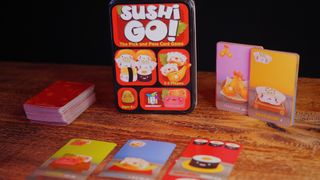
9. Sushi Go!
Our expert review:
Specifications
Reasons to buy
Reasons to avoid
✅ You want something quick and easy: Seeing as matches rarely last longer than 15 minutes, Sushi Go occupies the sweet spot in terms of a kid's attention span. Its gameplay is blissfully simple too, so you won't spend most of that time explaining how it all works.
✅ You want something portable: Sushi Go comes in a handy little tin and doesn't take up much room in use, so it's ideal for slinging in a backpack for days out or when you're on vacation.
❌ Your kids hate math: Because you have to understand basic math to work through Sushi Go, it won't be a good fit for very young children or those who are practically allergic to sums.
❌ You want a game for very young kids: Most will be able to get a grip on Sushi Go without much fuss, but younger children may struggle to think ahead enough. It relies on a basic understanding of math as well, so keep that in mind before buying for very small members of the family.
At a glance: This light-hearted game is perfect if you want something quick but fun; it's got the secret sauce of being fast-paced with easy-to-understand rules. More specifically, you can learn and complete it in under 15 minutes. That means you won't mind playing round after round (which is always handy when it comes to board games for kids), especially because Sushi Go's gameplay is so moreish.
How it works: Sushi Go is different every time you pick it up. It works in a very similar way to Exploding Kittens, with players taking a card and passing the rest on… except here you need to build a selection of dishes that earn points over the course of three rounds. Whoever racks up the biggest score wins.
Some of these cards are worth a lot right away, others provide multipliers, and yet more require you to collect a set for bigger payouts.This means that there are multiple approaches you can take on your path to victory. (Just don't forgot about Puddings, which are only scored at the end of the game and may tip your score over the edge.)
Gameplay: The elevator pitch for Sushi Go is simple, but don't think it's shallow as a result. Because you'll be looking through your hand of cards before passing it to the next player (and can obviously tell what others have picked), smart cookies can sabotage their rivals by taking the cards someone else needs. It's delightfully devilish, and most will pick it up quickly.
A quickfire gem that won't get boring any time soon
The game's rapid-fire nature makes it a winner with little ones that don't have much patience, too. Matches don't take long and are easy to set up, so you can happily run an encore without much trouble.
Not that this is only for kids, of course. It'll be a hit with all ages, and is a great warm-up game before moving on to something with more depth.
🏆 GamesRadar+ verdict
Sushi Go is a quickfire gem that won't get boring any time soon. It's light, breezy, and charming enough to turn you into an instant fan. Plus, the fact that it doesn't have a board makes it a great travel option for gamers on the go.
Read more: Ticket to Ride review
More recommendations for kids

If you're looking for a quick and easy distraction at home or on the go, try Spot It (AKA Dobble in the UK). As the name would suggest, it's about seeing matches faster than anyone else, and is ideal for younger kids.

The concept for King of Tokyo is pure gold: you're an over-the-top monster rampaging downtown. In terms of gameplay, everyone's playing chicken to see how long they can hold out, and it's brilliantly tense. A good choice for older kids.
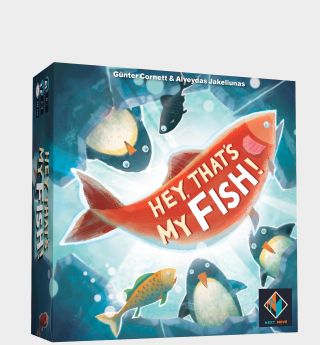
Besides a silly title that should go down well with children of all ages, this is simple to get the hang of but endlessly replayable. You've got to collect fish while cutting off your opponents, so requires problem-solving to master.
How we test the best board games

- Every board game is played multiple times
- Our sessions include a variety